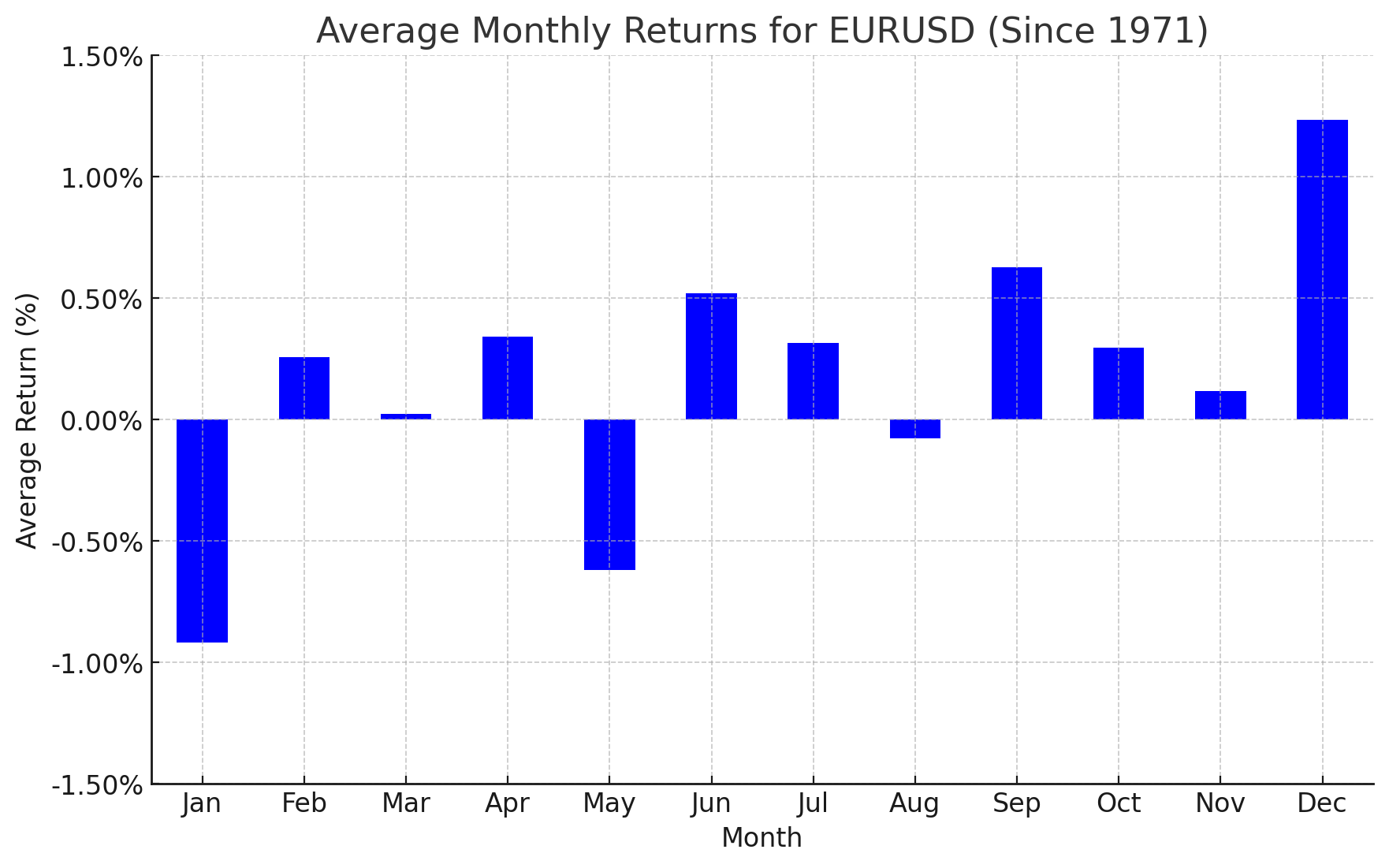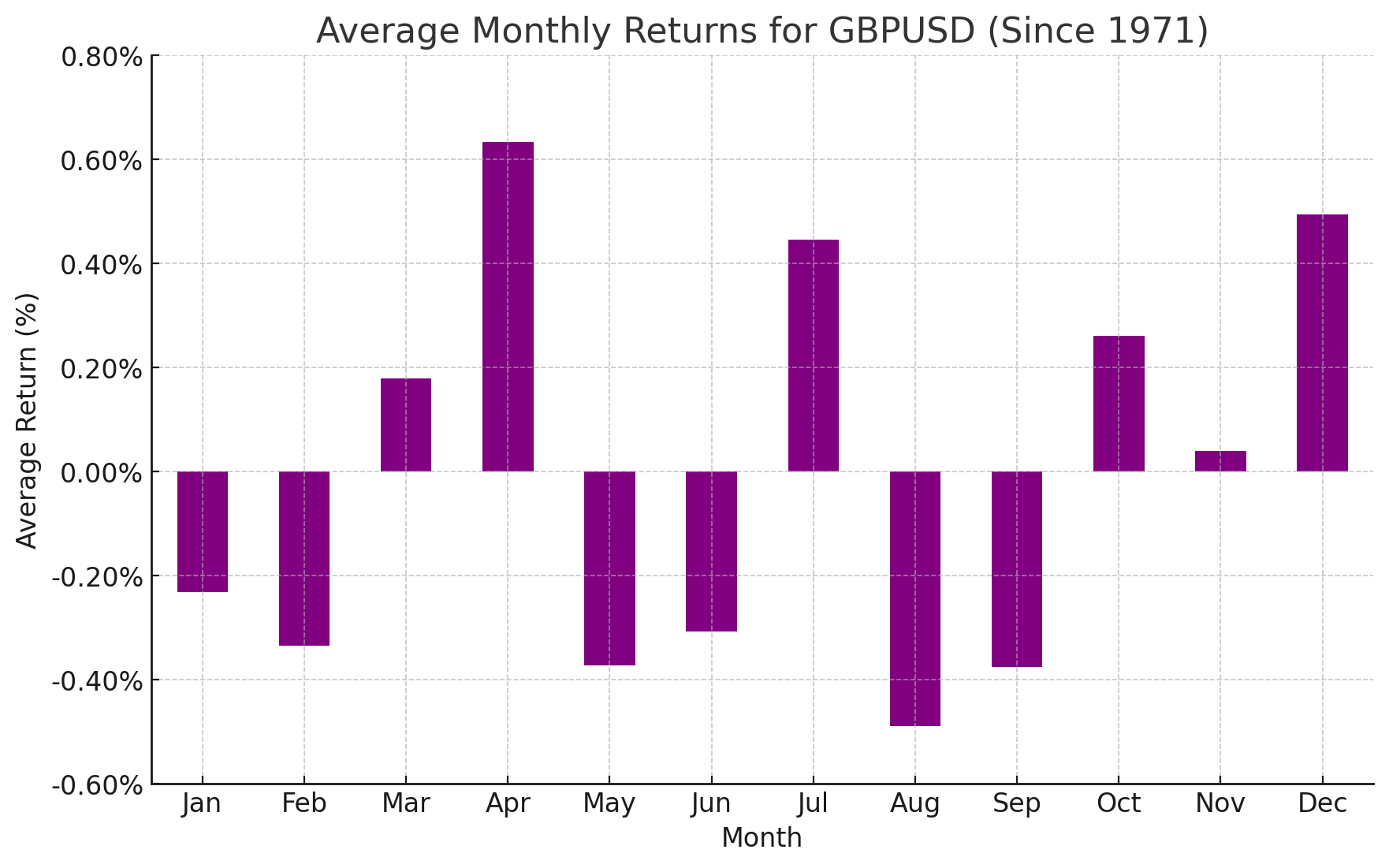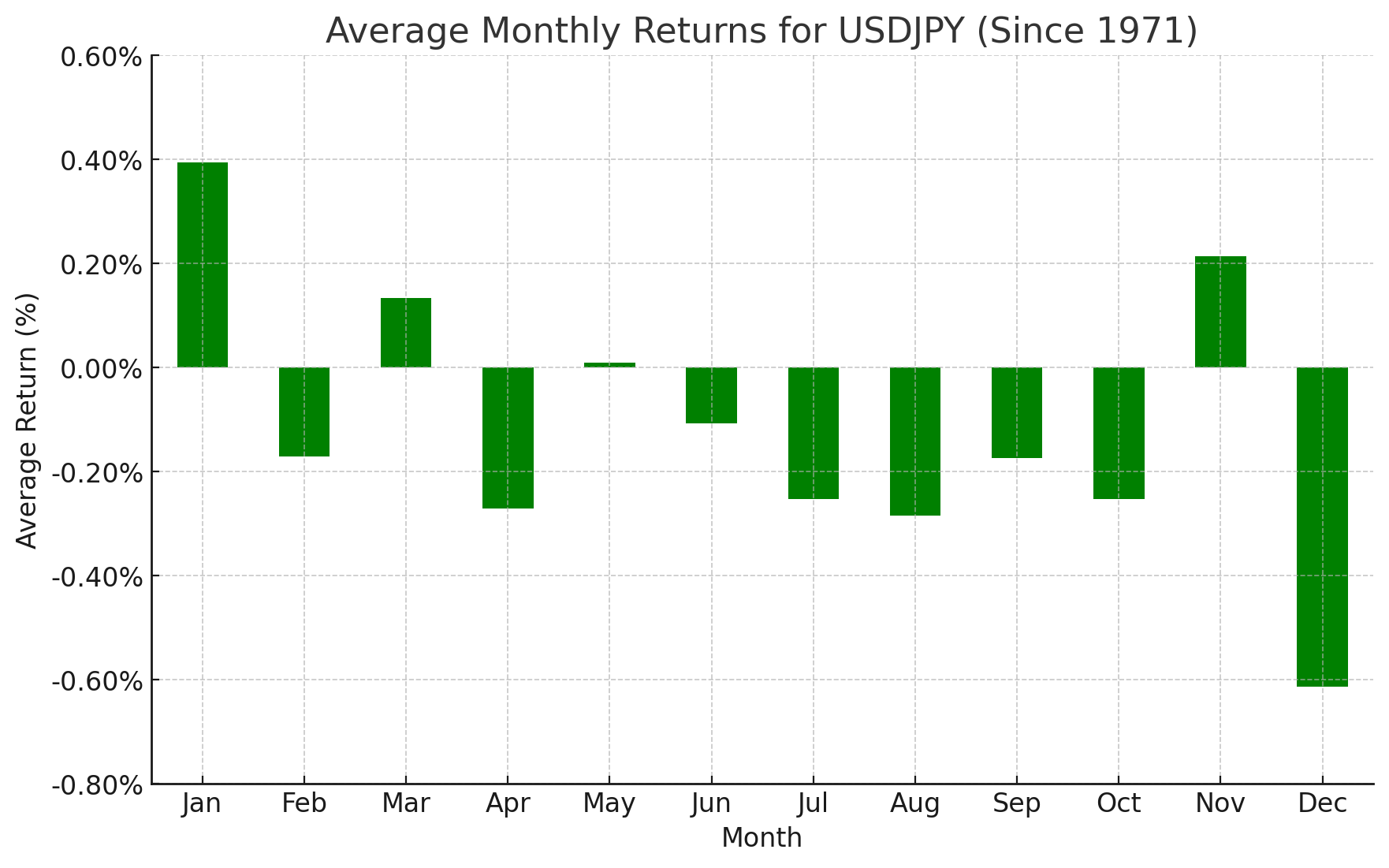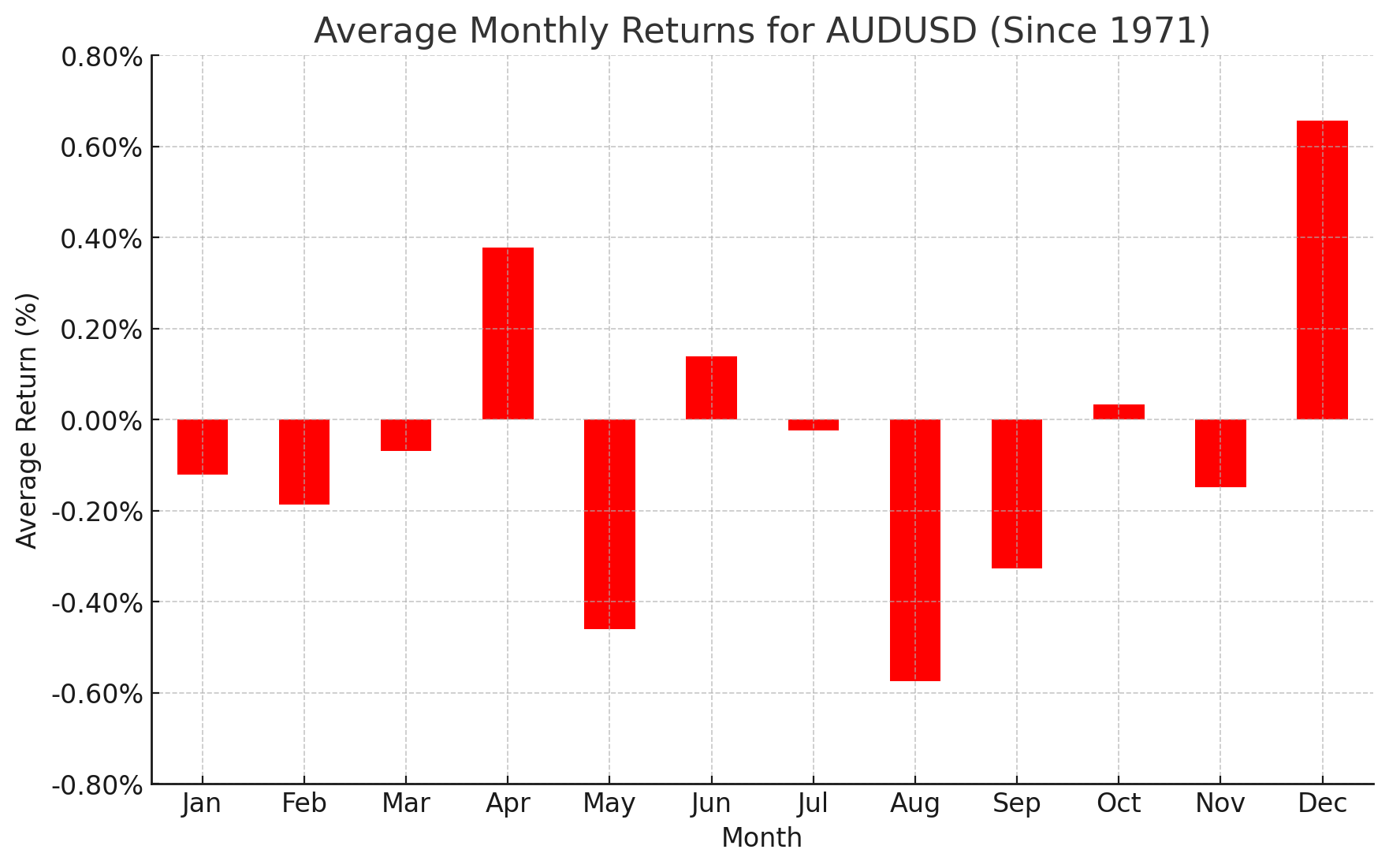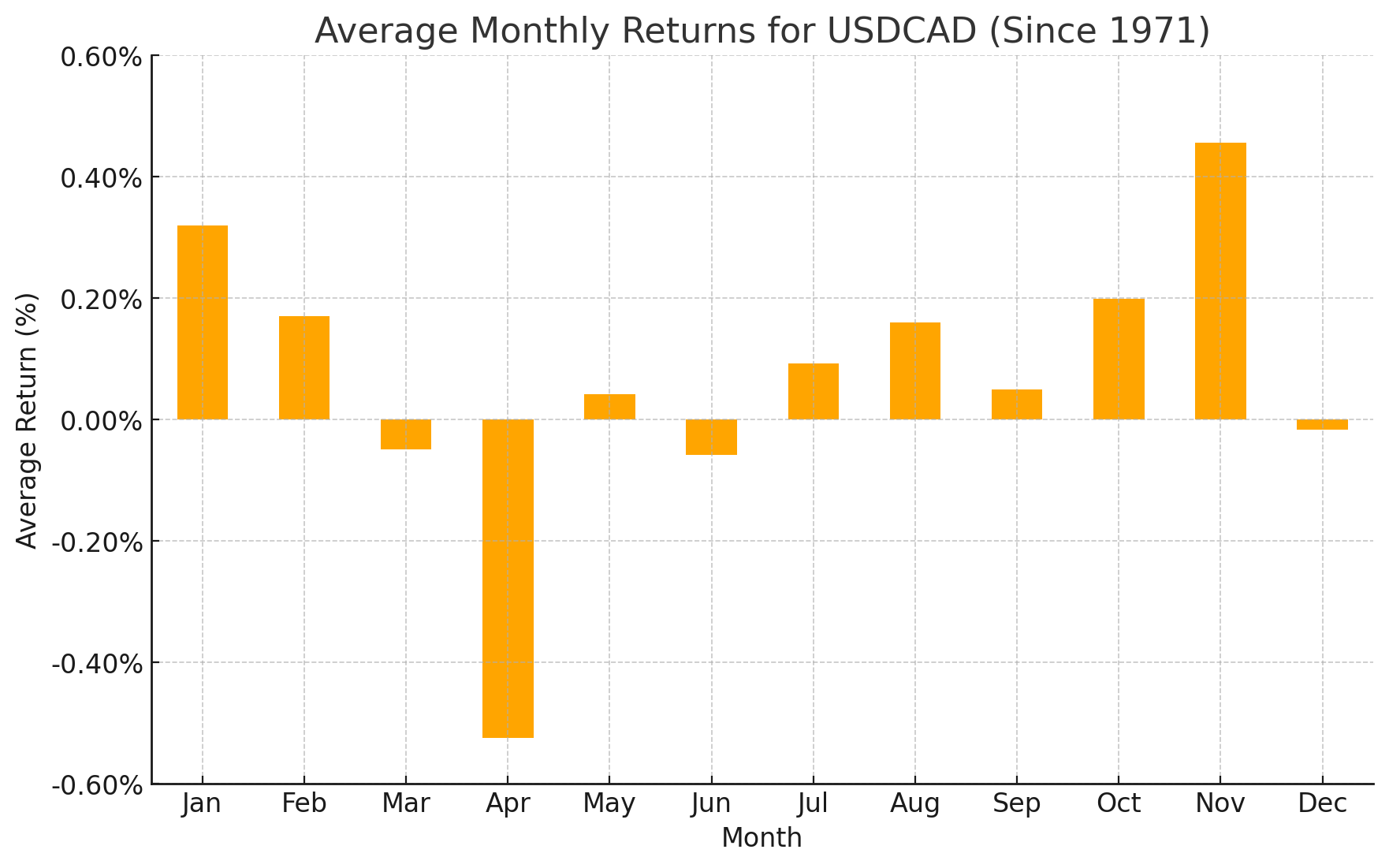July has historically been a bullish month for going back to the Bretton Woods Agreement in 1971 – will it hold this month?
July Forex Seasonality Key Points
- July has historically been a bullish month for GBP/USD going back to the Bretton Woods Agreement in 1971.
- In contrast, AUD/USD and USD/CAD have tended to consolidate in July over the last 50+ years.
- With US President Trump’s trade war in flux as we go to press, it’s worth watching the headlines to determine if deals, or more uncertainty, is likely in the second half of the year.
The beginning of a new month marks a good opportunity to review the seasonal patterns that have influenced the forex market over the 50+ years since the Bretton Woods system was dismantled in 1971, ushering in the modern foreign exchange market.
As always, these seasonal tendencies are just historical averages, and any individual month or year may vary from the historic average, so it’s important to complement these seasonal leans with alternative forms of analysis to create a long-term successful trading strategy. In other words, past performance is not necessarily indicative of future results.
Euro Forex Seasonality – EUR/USD Chart
Source: TradingView, StoneX. Please note that past performance is not necessarily indicative of future results.
Historically, July has been a modestly bullish month for , with the world’s most widely-traded currency pair sporting an average return of +0.32% over the last 50+ years. In June, EUR/USD followed its bullish seasonal trend, surging nearly 4% to reach its highest level in over 3.5 years.
While the momentum and seasonal tendency point to the potential for continued gains in July, it’s worth noting that the pair is very stretched relative to its medium- and long-term moving averages, suggesting that a near-term dip in the first half of the month may be more likely than usual.
British Pound Forex Seasonality – GBP/USD Chart
Source: TradingView, StoneX. Please note that past performance is not necessarily indicative of future results.
Looking at the above chart, GBP/USD has historically seen strength in July, with average returns of around +0.45% since 1971. Like the euro, the British pound traded higher in June to reach multi-month highs amidst broad-based US dollar weakness. After a run of five straight “up” months, it may be more difficult for bulls to build on this year’s gains through the summer without a near-term pullback or consolidation first.
Japanese Yen Forex Seasonality – USD/JPY Chart
Source: TradingView, StoneX. Please note that past performance is not necessarily indicative of future results.
July has historically been a modestly bearish month for , with the pair falling by an average of -0.25% since the Bretton Woods agreement. In line with its long-term seasonal trend, USD/JPY saw relatively quiet trade in June amidst a lack of clear progress in trade negotiations between the US and Japan. Traders will be watching the 2-year lows at 1.3950 for a potential breakdown if the seasonal trend asserts itself again this month.
Australian Dollar Forex Seasonality – AUD/USD Chart
Source: TradingView, StoneX. Please note that past performance is not necessarily indicative of future results.
Turning our attention Down Under, has historically seen quiet price action in July, with an average move of -0.2% going back to 1971. Last month, AUD/USD rallied more than 2%, following its bullish seasonal trend to break above the 61.8% Fibonacci retracement of the September 2024 to April 2025 drop at 0.6550. Following four straight positive months, a consolidation in line with the seasonal trend this month would not be surprising.
Canadian Dollar Forex Seasonality – USD/CAD Chart
Source: TradingView, StoneX. Please note that past performance is not necessarily indicative of future results.
Last but not least, July has been a modestly positive month for , with an average historical return of +0.09%. The fell against its Northern rival last month, and bulls are starting to warily eye the 1.5-year low at 1.3425 as a key support level that needs to hold to keep any semblance of optimism intact.
As always, we want to close this article by reminding readers that seasonal tendencies are not gospel – even if they’ve tracked relatively closely so far this year–so it’s important to complement this analysis with an examination of the current fundamental and technical backdrops for the major currency pairs.

